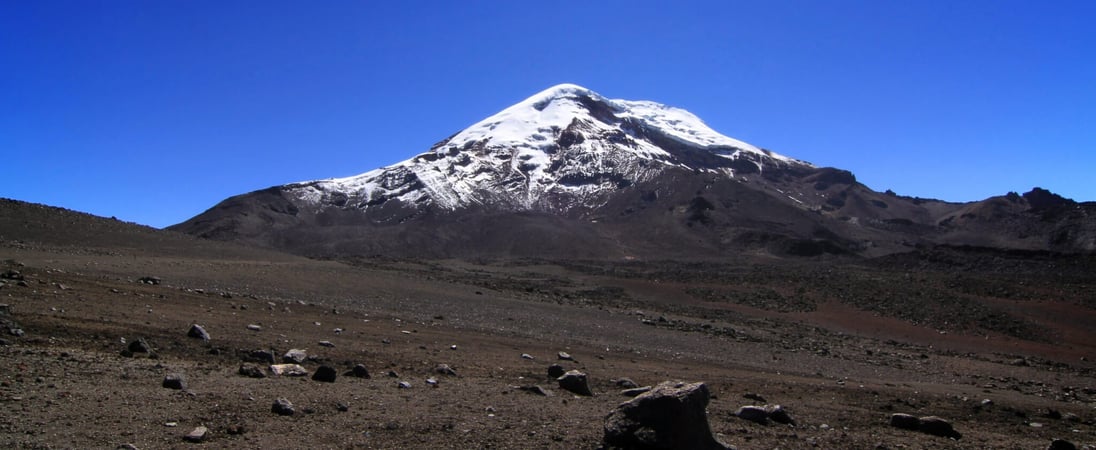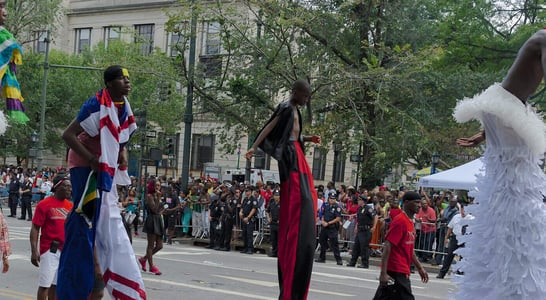
Chimborazo Day
Climb a hill or mountain, or set yourself a metaphorical “mountain” goal to honor the tallest mountain the world as measured from the Earth’s core, Chimborazo.
Have you ever heard of Chimborazo? It’s a massive volcano in Ecuador. Though not the highest peak by elevation, it’s the furthest point from the Earth’s center due to the planet’s bulge at the equator.
This makes its summit the closest point on Earth to the stars. Adventurers and climbers seek it out for its breathtaking views and challenging ascent.
Imagine a day when mountains whisper tales of adventure, and the air buzzes with tales of daring climbs and majestic views. Enter Chimborazo Day, a celebration not just of a mountain but of the human spirit, nature’s wonders, and the joy of reaching new heights.
Celebrated every June 3rd, this day honors Ecuador’s towering pride, Chimborazo, known not just for its sky-piercing peak but as a symbol of exploration, challenge, and the sheer beauty of our planet.
But why do we celebrate this particular peak? Chimborazo isn’t just any mountain. Standing tall at 6,263 meters (about 20,548 feet), it holds the title of Ecuador’s highest peak and a spot in the Andes’ majestic range.
But here’s the twist: due to the Earth’s bulge at the equator, Chimborazo’s summit is the farthest point from the center of our planet, making it closer to the stars than Everest’s peak.
This unique geographical quirk and its rich cultural and natural significance give Chimborazo Day its special flavor.
The day is steeped in history, dating back to 1880, initially honoring Alexander von Humboldt’s climb in 1802. It’s a day to marvel at human achievements, revel in the great outdoors, and pledge to preserve the stunning environments surrounding us.
Whether it’s hiking, learning about Ecuador’s rich culture, or simply enjoying the great outdoors, Chimborazo Day beckons everyone to celebrate the high points in life and the natural wonders that inspire us to reach further.
So, whether you’re an adventure seeker, a nature lover, or someone who appreciates the grandeur of our world from a cozy chair, Chimborazo Day offers a moment to pause, reflect, and celebrate the marvels of our Earth and the explorations that bring us closer to understanding its mysteries.
How to Celebrate Chimborazo Day
Celebrating Chimborazo Day can be a blast with these creative ideas that everyone can enjoy, no matter where they are. First, why not embark on a mini-adventure?
Lace up your hiking boots and find a local trail to conquer. It’s a nod to the explorers who’ve scaled Chimborazo and a great way to appreciate the beauty of nature.
Alternatively, throw a mountain-themed bash, complete with decorations inspired by the majestic peaks of Ecuador and tasty treats that bring a slice of Ecuadorian flavor to your table. It’s a fun way to bring the spirit of Chimborazo into your home.
For those who prefer a cozy day in, indulging in a documentary or book about mountain expeditions can be enlightening. It’s a chance to marvel at the courage of climbers and the mysteries of the mountains they ascend.
Or, get your creative juices flowing with a painting session. Gather your friends or family and paint a Chimborazo or any mountain that inspires you. It’s about capturing the essence of adventure and the beauty of the natural world, regardless of your artistic skill level.
Lastly, giving back to nature aligns perfectly with the spirit of Chimborazo Day. Organize a local clean-up or plant a tree to contribute to environmental conservation.
Learning something new about Ecuador is another great way to celebrate, whether it’s picking up a few Spanish phrases or exploring the country’s rich cultural heritage.
And don’t forget to share your celebration on social media with #ChimborazoDay to inspire others. These activities honor the day and promote a deeper connection with our planet and its wonders.
History of Chimborazo Day
Once upon a time, people decided to celebrate a mountain, and Chimborazo Day was born. This special day, marked every June 3rd, pays tribute to Ecuador’s tallest peak, Chimborazo. The history of this celebration is as fascinating as the mountain itself.
The story began with Alexander von Humboldt, an explorer who tried to conquer Chimborazo’s heights in 1802.
Although he didn’t reach the top, his journey sparked interest and admiration. Many years later, in 1880, people started celebrating Chimborazo Day to honor his adventurous spirit and the mountain’s natural beauty.
For over a century, Chimborazo Day has grown into a day of wide-ranging activities. It’s not just about climbing; it’s about appreciating the wonders of nature, the thrill of exploration, and Ecuador’s rich cultural heritage.
People celebrate by hiking, learning about the mountain’s unique ecosystems, and exploring Ecuadorian traditions.
Chimborazo isn’t just any mountain. Thanks to the planet’s equatorial bulge, its peak is the farthest point from the center of the Earth. This geographical wonder adds a special twist to the day, reminding us of the planet’s mysteries and the joy of discovering them.
So, every June 3rd, Chimborazo Day invites adventurers, dreamers, and nature lovers to celebrate. It’s a day to reflect on human achievements, connect with the environment, and set goals for personal highs.
Whether you’re at the mountain’s base or halfway across the world, Chimborazo Day is a call to appreciate our world’s towering wonders and the stories they tell.
Chimborazo Day FAQs
What role did Chimborazo play in ancient Andean astronomy?
Chimborazo was an important marker in Andean astronomy. Its position aligned with solstice events, helping indigenous communities track agricultural cycles.
Many rituals revolved around its prominence in the sky, highlighting its role in both spirituality and survival.
Why was Chimborazo seen as sacred by indigenous cultures?
Indigenous communities believed Chimborazo was home to powerful spirits controlling weather and fertility.
Offerings were made to the mountain to ensure good harvests. This reverence continues today, blending traditional beliefs with modern celebrations.
What makes Chimborazo’s glaciers unique?
Chimborazo’s glaciers have been a vital resource for centuries, supplying water and ice to local communities.
Harvesters, known as hieleros, once carried blocks of ice to markets miles away. Today, their stories symbolize resilience and adaptation in harsh environments.
How does Chimborazo affect Ecuador’s climate?
The mountain plays a significant role in regulating local weather patterns.
It influences rainfall in nearby valleys, which impacts farming and water resources. Its glaciers act as natural reservoirs, feeding rivers that sustain agriculture and ecosystems.
What modern traditions connect Chimborazo to Ecuadorian identity?
Chimborazo appears in Ecuador’s national anthem, symbolizing pride and heritage.
It’s also a centerpiece in local festivals, where dancers and musicians honor its cultural importance. The mountain remains a powerful emblem of unity.
What are some surprising archaeological discoveries near Chimborazo?
Archaeologists have found ancient ceremonial sites at the mountain’s base.
These sites reveal how deeply connected early cultures were to Chimborazo. Artifacts suggest rituals aimed to honor its perceived divine powers.
How does Chimborazo inspire eco-tourism today?
Tourists visit Chimborazo for sustainable hiking and wildlife viewing. Programs emphasize protecting the mountain’s fragile ecosystem while offering cultural experiences.
These efforts balance tourism with conservation, preserving Chimborazo’s legacy.
What scientific studies continue around Chimborazo today?
Researchers study its glaciers to monitor climate change. The melting ice offers clues about global warming’s impact on high-altitude ecosystems.
Chimborazo serves as a natural laboratory for understanding environmental shifts.
How do local myths connect Chimborazo with the stars?
Myths describe Chimborazo as a celestial guardian reaching for the heavens.
The mountain’s snow-capped peak was said to touch the Milky Way. These stories reflect Andean cultures’ awe of both the Earth and the cosmos.
What makes Chimborazo’s wildlife unique?
Rare species, such as the Chimborazo tree frog, thrive on its slopes. This amphibian has adapted to the mountain’s cold, high-altitude environment.
Its survival showcases the mountain’s role as a haven for unique biodiversity.
See what else is happening…
There’s always more going on every month at Days Of The Year. Here are our favorites this month!
Also on ...
View all holidaysLove Conquers All Day
Capturing the essence of connection, it's an emotion that weaves through every story, binding hearts with invisible threads.
World Cider Day
A crisp, refreshing drink that embodies autumn in a glass. Made from freshly pressed apples, it's the perfect companion for cozy evenings.
World Bicycle Day
The bicycle is one of the most beneficial inventions for your personal health and for the health of the environment. Get out and get some sustainable exercise.
National Egg Day
Egg-citing news! Eggs are a versatile and delicious ingredient that can be scrambled, fried, poached, boiled, and baked into so many tasty treats. So let's egg-splore the egg-ceptional world of eggs and have an egg-straordinary day!
We think you may also like...
Lei Day
Bring the feeling of sand in your toes and sun on your face to wherever you are by wearing a tropical lei, most commonly associated with beautiful Hawai’i.








